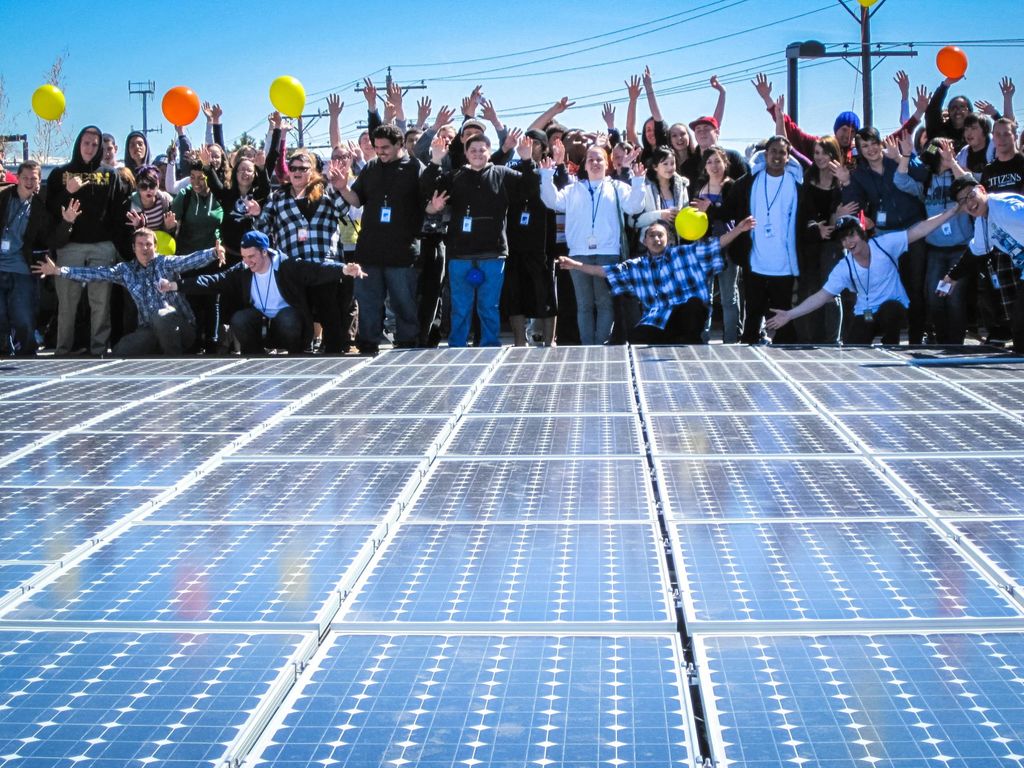
Thinking about going solar but unsure about the true costs involved? You’re not alone. While the allure of clean, renewable energy is strong, the financial landscape can be more complex than it appears. The promise of harnessing free energy from the sun is enticing, but the financial reality can be more complicated than it seems.
Having lived off-grid for over a decade, I’ve navigated the intricate and often hidden expenses that come with installing and maintaining solar panels and other renewable energy systems. This guide aims to shed light on the often-overlooked costs associated with solar energy systems, ensuring you have a complete picture of what your return on investment (ROI) will look like before making your solar commitment.
In this comprehensive guide, we’ll delve deep into the less obvious costs associated with solar energy—from upfront investments and installation fees to ongoing maintenance, repairs, and efficiency losses over time. By the end, you’ll have a clear understanding of what to expect financially when embracing solar energy, empowering you to make an informed decision with confidence.
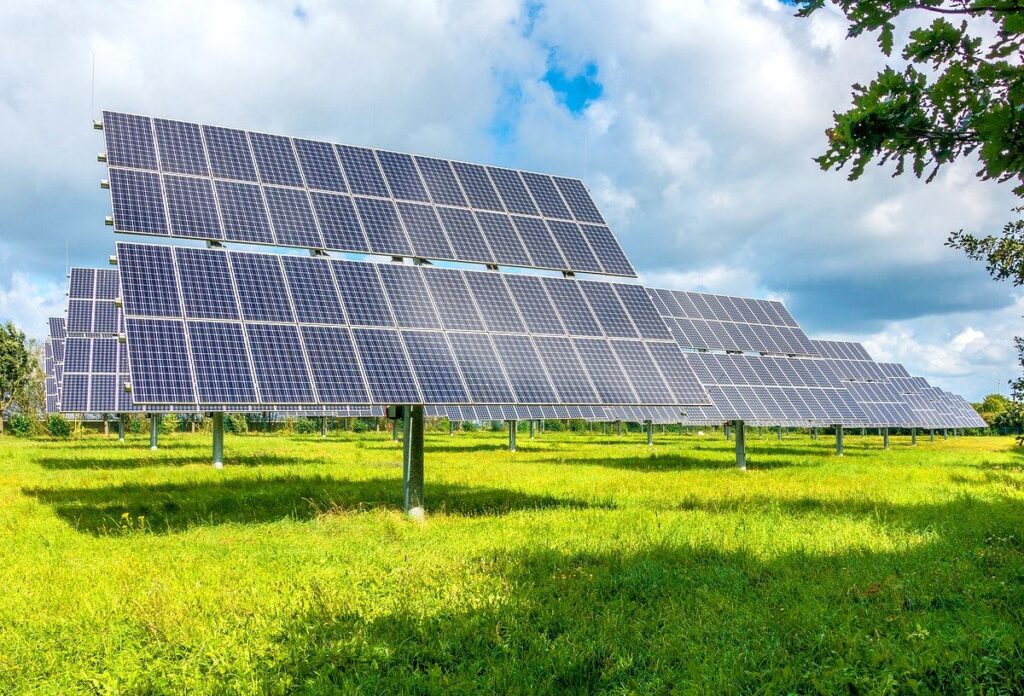
1. **Initial Equipment Expenses**
The first and most apparent cost in your solar energy journey is the equipment itself. This encompasses the core components that make your system function, including the solar panels, which are the heart of your system, converting sunlight into electricity. You’ll also need inverters, which are devices that convert the direct current (DC) produced by your panels into alternating current (AC) used in your home.
Beyond the major components, there are also essential mounting systems—hardware to securely attach panels to your roof or ground mounts—and the intricate wiring and electrical components necessary for connecting your system safely and efficiently. These foundational elements represent a significant portion of your initial investment, forming the very backbone of your renewable energy setup.
Typical costs for these essential items can range widely. Solar panels themselves can cost $5,000 to $20,000, depending on the system size and quality required for your energy needs. Inverters usually fall between $1,000 to $3,000, while mounting systems might add another $500 to $3,000 to the total. Miscellaneous equipment can also contribute an additional $500 to $2,000 to your upfront expenditure.
When I went off-grid, my initial equipment costs totaled around $15,000. It’s crucial to invest in high-quality components to ensure longevity and efficiency, as cutting corners here can lead to more significant expenses down the line in terms of repairs or premature replacement. Thinking long-term about the durability and performance of each piece of equipment is key to maximizing your solar investment.
Read more about: The Hidden Costs: Unmasking the Real Reasons Your Electric Bill Exploded After Bringing Home an EV
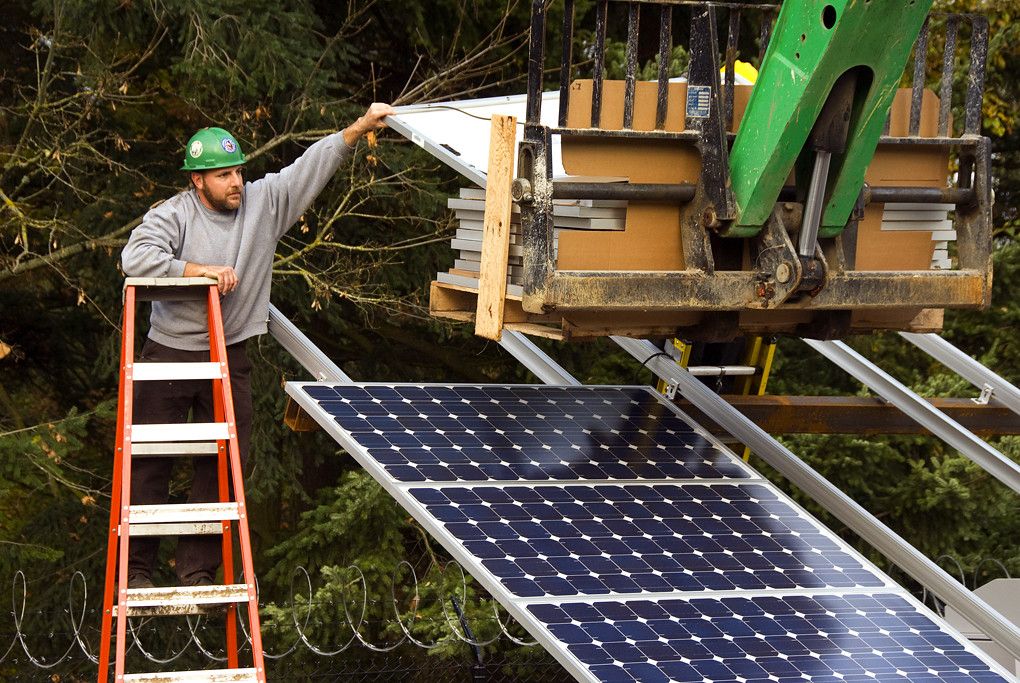
2. **Professional Installation Fees**
While the idea of a DIY installation might initially seem like a tempting cost-saving strategy, the complexities and inherent risks often far outweigh any perceived benefits. Professional installation ensures crucial aspects are handled correctly. This includes safety, as proper handling of electrical components significantly reduces fire and electrocution risks for both installers and homeowners.
Furthermore, professionals ensure compliance with local codes and regulations, navigating the often-intricate web of building and electrical standards. They also help maintain warranty protection, as many manufacturers explicitly require professional installation for their product warranties to remain valid. Attempting to install a complex solar system without expertise can quickly lead to costly mistakes and potential hazards.
The costs associated with professional installation primarily revolve around labor fees, which can range from $2,000 to $5,000 depending on the size and complexity of your system. Additionally, professional installers often provide additional services such as system design, assistance with permitting applications, and facilitating grid connection, all of which can add to the overall cost but are invaluable for a smooth transition to solar.
My personal experience with a DIY attempt underscored the value of hiring qualified professionals. Initially, I tried to install a small solar panel on my shed to gain hands-on experience. Despite extensive research, I made critical errors: the panel wasn’t securely attached, causing it to detach during a storm, and incorrect wiring led to system inefficiencies and safety hazards. This DIY attempt cost me an extra $1,000 in repairs and professional re-installation, highlighting that investing in expertise from the outset often provides peace of mind and long-term savings.
Read more about: Luxury Car Owner’s Headlight Nightmare: Unmasking the Shocking Costs Behind Modern Automotive Lighting
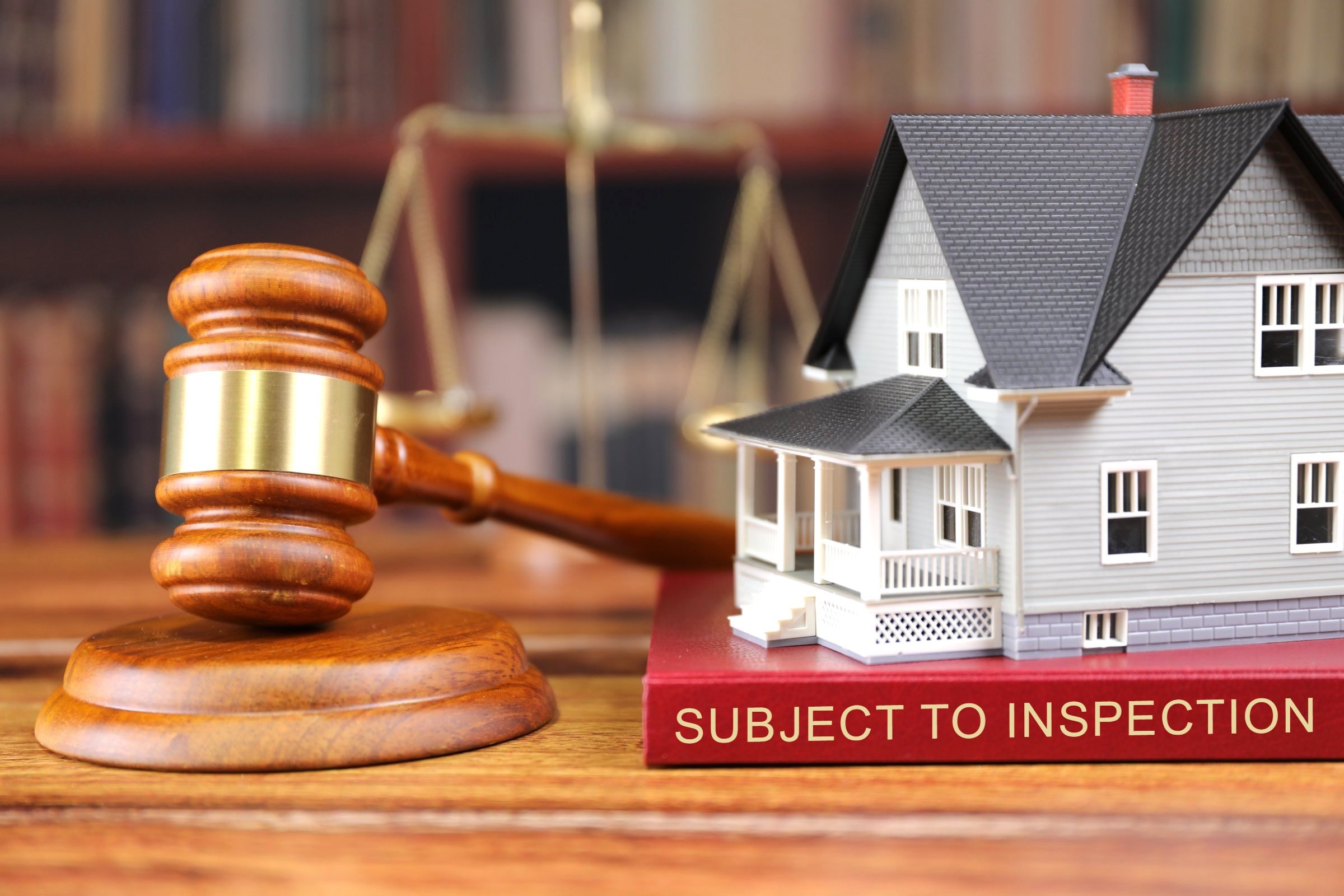
3. **Permits, Inspections, and Legal Fees**
Before any solar installation work can begin, you’ll need to navigate a landscape of local regulations that can add both time and expense to your project. These crucial steps ensure that your system is installed safely and legally. Building permits, for example, are almost always required for any structural and electrical modifications to your home.
Following installation, a series of inspections will be necessary to ensure the system meets stringent safety and code standards set by local governments or regulatory agencies. If you plan to connect your solar system to the grid, interconnection agreements with your utility company are also necessary. While your installer often coordinates this process on your behalf, these steps are legally mandated and cannot be skipped.
The costs for these administrative necessities can accumulate. Permits alone might set you back $100 to $500, while inspections can range from $200 to $600. In some cases, if you choose to hire a consultant to navigate particularly complex regulations or legal issues, you might expect to pay an additional $500 to $1,000 in legal fees. These are costs that are as essential as the physical installation itself, sometimes even costing as much as the installation labor.
In my rural area, I paid about $800 for permits and inspections to ensure everything was compliant. Neglecting these critical steps can result in severe consequences, including fines, mandatory system removal, or even the inability to connect to the grid, ultimately costing you far more in the long run than the initial permit and inspection fees. This process can often take three weeks to three months, and even three to eleven weeks for the permits and inspections part.
Read more about: Unmasking the True Price: 14 Hidden Costs That Turn Car Ownership into a Financial Maze for Every Driver
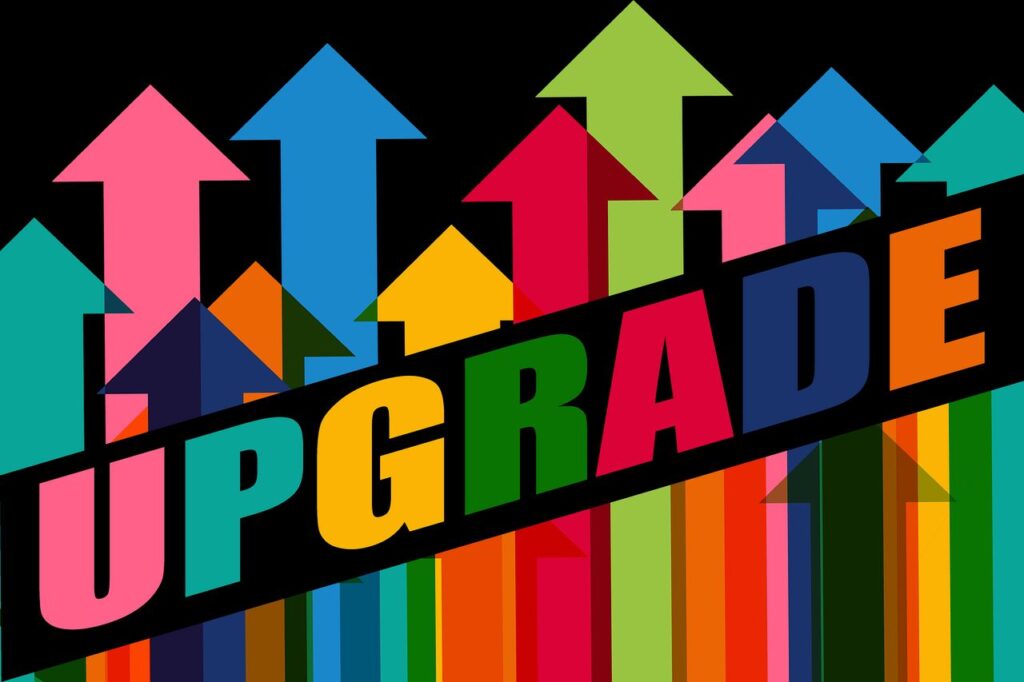
4. **Home Upgrades and Retrofits**
Older homes, particularly, may require significant upgrades or retrofits to safely and efficiently accommodate a new solar energy system. This isn’t just about the panels themselves; it’s about ensuring your home’s infrastructure can support and integrate the new technology. One common requirement is electrical panel upgrades, as modern solar systems generate substantial power, and older panels may not be equipped to handle the increased electrical loads or meet current code requirements.
Another critical area is your roof. It’s essential to ensure your roof can adequately support the weight of the solar panels and the installation hardware. This might necessitate roof repairs or even reinforcements, especially if your roof is older or shows signs of wear and tear. A robust and well-maintained roof is fundamental to a stable and long-lasting solar installation.
Furthermore, updating old wiring to meet current safety standards might be necessary to integrate the solar system seamlessly and securely. These enhancements ensure that your home’s electrical system can safely and efficiently distribute the energy produced by your solar panels throughout your property. These pre-installation improvements are often overlooked but are vital for system performance and safety.
Estimated costs for these necessary home upgrades can add a significant amount to your overall budget. Electrical upgrades could range from $1,000 to $3,000, while roof work, depending on its extent, might cost anywhere from $1,500 to $5,000. Wiring updates could add another $1,000 to $4,000 to your expenses. I personally had to invest $2,500 in electrical upgrades and an additional $3,000 in roof reinforcements, which added a substantial, yet necessary, amount to my overall solar expenditures.
Read more about: Navigating the Crossroads: Key Legal and Policy Shifts Redefining the Trucking Industry in 2025

5. **Paying For Insurance**
Your solar system represents a significant investment, and like any valuable asset, it’s one you’ll want to protect. While manufacturer and installer warranties offer substantial protection and peace of mind for the equipment itself, they typically won’t keep you covered in extreme situations, emergencies, or what are often referred to as acts of God. For these unpredictable events, insurance becomes a crucial safeguard for your investment.
It is highly recommended that you insure your solar system to keep your investment safe in the unlikely event it would be damaged during a fire, extremely high winds and severe weather, or even stolen. Solar panels are designed to be durable and can last upwards of 25 to 30 years, but unforeseen circumstances can still lead to costly repairs or replacements, making robust insurance coverage a wise preventative measure.
For many roof-mounted solar systems, the equipment is permanently affixed to the roof of your home or building, meaning it will likely fall under your existing homeowner’s property insurance. However, the added value that a solar system brings to your property may require you to increase your overall coverage, potentially leading to an increase in your monthly premium. It’s always best to check directly with your insurance company to determine the exact impact.
Conversely, ground mount or carport systems are not physically attached to your main building and may necessitate a separate insurance policy. Regardless of the system type, consulting your insurance provider is essential to understand how installing solar will impact your insurance payments and to ensure comprehensive coverage. In the vast majority of cases, the additional money you’d pay in insurance premiums will pale in comparison to all the money you’ll save by going solar, so while it’s a hidden cost, it shouldn’t deter you.
Read more about: Luxury Car Owner’s Headlight Nightmare: Unmasking the Shocking Costs Behind Modern Automotive Lighting

6. **Maintenance and Panel Cleaning Costs**
Solar panels are a tried and true technology, built to operate effectively for decades with no moving parts, meaning they won’t typically require any sort of regular maintenance. However, this doesn’t mean they are entirely maintenance-free. While routine upkeep is minimal, repairs are sometimes needed, and maintenance costs can spring up throughout the years, warranting your attention and budget.
Your solar equipment will come with warranties that can last anywhere from ten to 30 years, depending on the specific equipment and manufacturer. These warranties typically ensure your solar panels don’t degrade too quickly or fail to stand up to moderate weather conditions. But it’s vital to understand a common limitation: even if you receive free replacement panels from the manufacturer due to a fault, the manufacturer’s warranty often won’t cover the labor costs associated with removing the old equipment and installing the new.
This is where a comprehensive guarantee from your installer can make a significant difference. For instance, if you go solar with Paradise Energy, your system is backed by their ten-year Triple Ten Guarantee, which specifically covers any labor needed to replace equipment that falls under the manufacturer warranty. This guarantee also includes system monitoring and a production guarantee backed by their own money, providing an extra layer of financial security.
Beyond potential repairs, panel cleaning is another consideration. If you live in an area that experiences a lot of dust and little rain, or if your solar system is located on a farm, you may need to periodically clean your solar panels to maintain optimal efficiency. For safe and effective cleaning, it is generally recommended to hire a professional, as cleaning panels yourself could prove dangerous and potentially void your manufacturer’s warranty.
The cost of hiring a professional to clean your panels could range anywhere from a couple hundred to several thousand dollars, depending on the size of your system and how accessible the panels are. For many system owners, however, this is an expense that would only need to be completed once a year or every few years, as natural rainfall can often wash away the majority of dust and dirt that could potentially block your panels from the sun.
Read more about: The Silent Saboteurs: Why Your Semi-Trailers Are Leaking Days Before They Hit the Road

7. **Landscaping Around Ground Mounts**
One additional cost many new solar owners may not initially anticipate is the expense associated with landscaping and maintaining the area around or underneath a ground-mounted solar system. This is not merely an aesthetic concern; it’s a practical necessity to ensure the efficiency and longevity of your solar array. You’ll want to be absolutely sure that vegetation, such as tall grasses or weeds, does not grow high around the panels, as even partial shading can significantly reduce your system’s energy production.
There are a few different, effective ways you can keep the area around your ground mount well-maintained and free from obstructing plant growth. Popular methods include routine mowing of the grass and strategic application of herbicides to prevent unwanted vegetation. Some solar owners have even installed weed control fabric on the ground around the system, which provides a physical barrier to block any vegetation from reaching the surface and causing issues.
An innovative, albeit unconventional, approach some solar owners adopt is using grazing animals, such as goats and sheep, to keep weeds and grasses at bay around their solar panels. While this can be an eco-friendly and cost-effective method for vegetation control, it comes with its own set of considerations. It’s important to remember that animals can potentially damage the solar panels themselves or chew on the electrical wires, which could wreak havoc on your entire solar system and lead to expensive repairs.
To mitigate risks associated with using animals, specific panel height considerations are vital. The standard 2-foot clearance typically found below solar panels would only leave sufficient room for small livestock and poultry to safely wander amongst the panels without causing damage. If you plan to use larger animals for grazing, the panels could be raised to four feet or more, which would more safely accommodate them and minimize the risk of accidental harm to your valuable solar equipment.
Read more about: Beyond the Stage: Inside Taylor Swift’s Calabasas ‘Fortress’ and the Billion-Dollar Empire Protecting Her Privacy
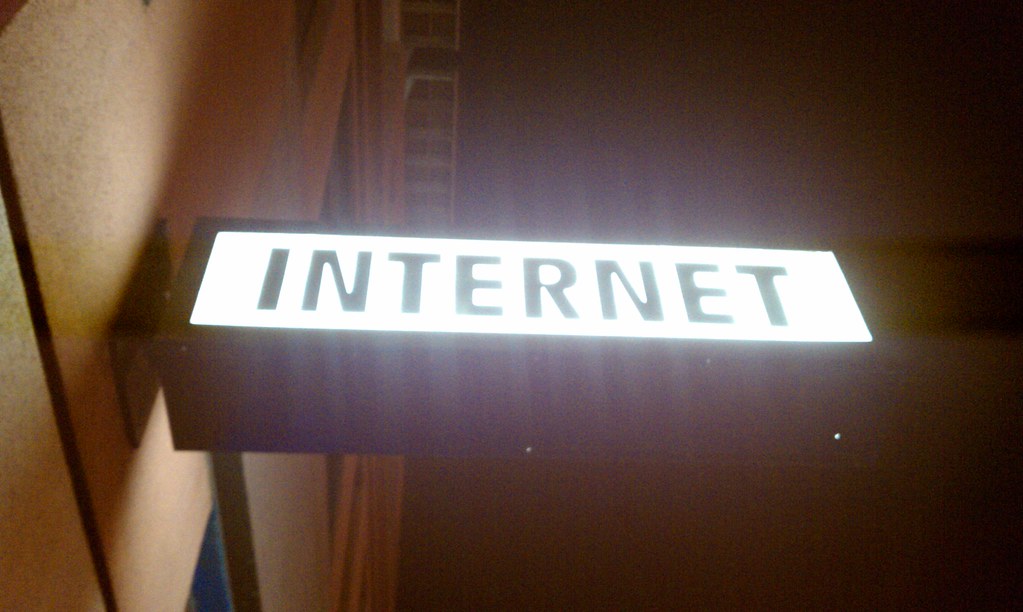
8. **Internet Costs for System Monitoring**
Monitoring your solar system’s production is more than just satisfying; it’s a practical tool for quickly identifying performance issues. To truly harness these benefits, your solar setup requires a reliable internet connection. This ensures continuous data flow, providing an up-to-date picture of your energy output and system health.
For example, with certain providers like Paradise Energy, a ten-year system monitoring service is included as part of their Triple Ten Guarantee. This monitoring is crucial for them to uphold their production guarantee, ensuring your system consistently generates the promised amount of electricity. Such guarantees provide an essential layer of assurance, demonstrating the installer’s commitment to your system’s long-term efficiency.
To take full advantage of these monitoring guarantees, your solar system needs to be located on a property with existing internet access. If reliable internet isn’t already available on-site, you will incur the additional cost and responsibility of installing and maintaining that connection. This ensures continuous remote monitoring, which is a cornerstone of effective system management and warranty compliance.
An internet subscription can add a smaller, yet recurring, expense to your overall solar budget. You can expect this cost to range from approximately $50 to $100 or more per month, depending on your chosen provider and service plan. However, if your property already has a robust internet connection, this particular hidden cost won’t impact your finances, making it a non-factor for many homeowners. Paradise Energy Solutions, for instance, offers cost-effective internet solutions specifically designed for solar systems, helping to mitigate this potential recurring expense.
Read more about: The Streaming Wars Are Over: Unpacking the Bundle Economy, M&A Reshaping Hollywood, and the Future of Digital Entertainment
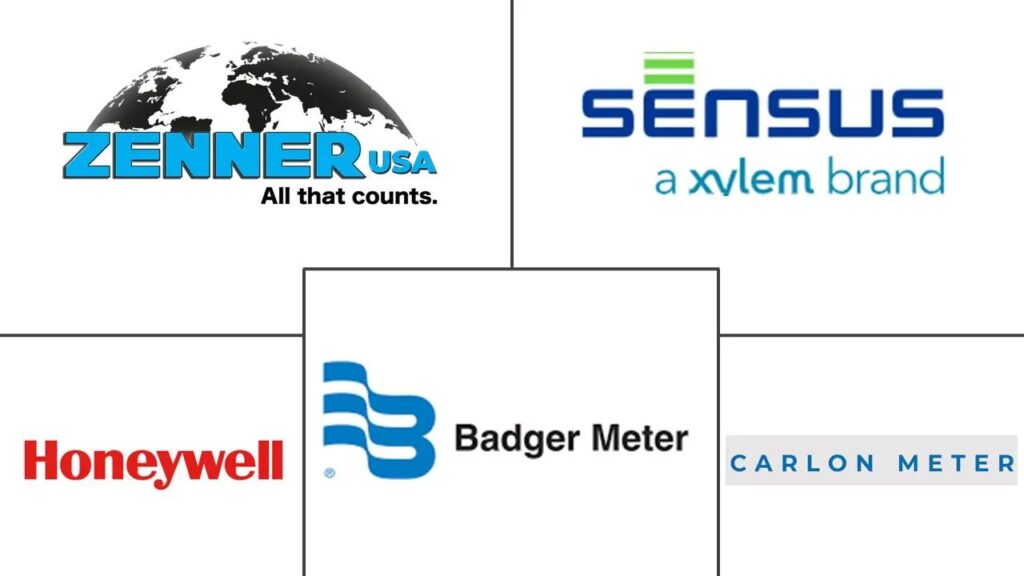
9. **Unavoidable Charges from Utility Companies**
One of the most appealing aspects of going solar is the prospect of eliminating your monthly electric bill. However, it’s important to understand that while solar dramatically reduces energy costs, it doesn’t always completely eradicate your utility bill. You can significantly slash your expenses, potentially bringing your monthly charges down to just a few dollars, but a complete zero bill is rarely the reality for grid-tied systems.
Your solar system will indeed produce a substantial amount of cost-free, emission-free electricity that you can use to power your home, business, or farm. Yet, an electric bill encompasses more than just the direct cost per kilowatt-hour of power consumed. There are certain fixed charges that, unfortunately, persist even after you’ve transitioned to solar energy. These charges are independent of your energy consumption from the grid.
These unavoidable fees can vary in name and amount from one utility company to another, but they are consistently present on your bill. They typically aren’t tied to a specific number per kilowatt-hour used and are often referred to as a customer service fee, a delivery fee, or even demand fees for larger commercial or industrial operations. These are essentially administrative costs that all utility customers must pay.
These small fees are mandatory for all utility customers, regardless of how much or how little electricity they consume. While they constitute a very minor portion of a typical electric bill, usually amounting to just a few dollars each month, they are a consistent, unavoidable expense. It’s a small reminder that full energy independence from the utility provider’s billing structure is elusive for most grid-connected solar owners.
Should your electricity consumption exceed what your solar system produces, you will supplement with grid-generated power, and the utility will charge for this additional usage. Conversely, if your system produces more electricity than you consume, your utility company will typically compensate you through net metering, often crediting your account or carrying over the excess.
Read more about: The Unexpected Urban Conundrum: Why Owning a Car in the City Can Become a Significant Liability

10. **The Reality of Unexpected Repairs**
While solar panels are renowned for their durability and longevity, designed to operate effectively for decades with minimal moving parts, the reality is that unexpected issues can still arise. Even with diligent maintenance, your system is not immune to problems that may necessitate repairs or even replacements, demanding both your attention and a dedicated budget. These unforeseen circumstances can quickly become significant financial considerations.
One of the most common issues involves inverter failures, as these critical components typically have a shorter lifespan than the panels themselves, often requiring replacement every 10 to 15 years. Panels can also sustain damage from extreme weather events such as hail, lightning, or falling trees, or they may exhibit system malfunctions due to manufacturing defects or errors during installation. Such incidents can significantly impact your system’s performance and require immediate action.
The costs associated with these repairs can be substantial. An inverter replacement, for instance, might cost anywhere from $1,000 to $2,500. Should a panel be damaged, a single panel replacement could set you back $200 to $500. Additionally, professional repair services typically charge an hourly rate of $100 to $300, which can quickly accumulate depending on the complexity and duration of the repair.
Most solar panel product warranties are valid for 10 to 25 years and should cover the cost of repairs from accidental damage or defective goods if you are still within that period. However, a crucial detail often overlooked is that labor and shipping costs for these repairs are not always included in product warranties. If your warranty has expired, you will likely need to cover all system repair costs out of pocket, emphasizing the importance of understanding your warranty’s full scope.
To mitigate expensive repairs, proactive measures are crucial. Homeowners should check their system’s physical condition weekly, reporting any cracks, excessive shading, or debris to their solar provider. Consider adding a critter guard if animals are present, as wildlife can damage wires or nest under panels, posing fire risks. Weekly monitoring of energy generation also helps signal problems early, allowing for timely intervention.
Read more about: America’s Iconic Sports Car: Decoding the Most Problematic Corvette Models in History to Help You Buy Smart
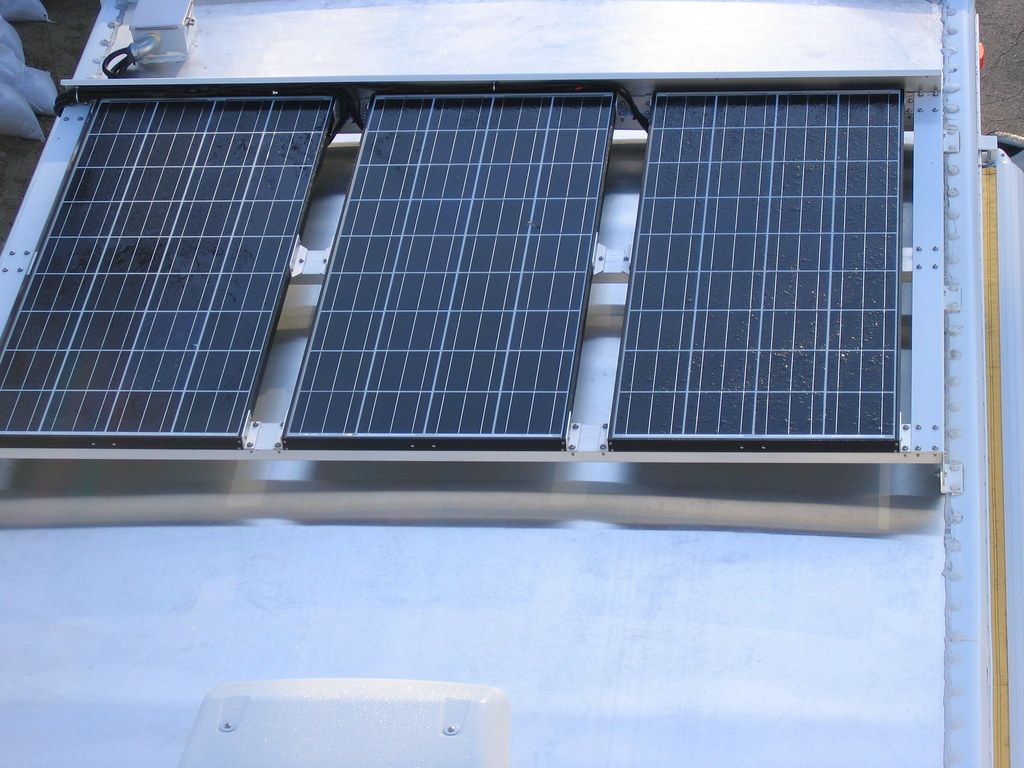
11. **The Crucial Investment in Energy Storage**
Unless you are utilizing electricity instantaneously as it is generated, or are fully reliant on net metering with no desire for backup power, investing in energy storage becomes a crucial component of your solar system. Batteries allow you to capture excess solar energy produced during peak sunlight hours and store it for use when the sun isn’t shining, such as at night or during cloudy weather. This significantly increases your energy independence and resilience.
When considering battery storage, you’ll encounter a few primary types, each with distinct characteristics and price points. Lead-acid batteries generally come with a lower upfront cost but tend to have a shorter lifespan and require more maintenance. In contrast, lithium-ion batteries represent a higher initial investment but offer a longer lifespan, greater efficiency, and are largely maintenance-free, making them a popular choice for modern solar setups.
The financial outlay for these storage solutions can be substantial. Lead-acid battery systems typically range from $2,000 to $5,000, presenting a more budget-friendly entry point. For those seeking enhanced performance and longevity, lithium-ion systems usually cost between $7,000 and $14,000. The initial investment decision should weigh your budget against your long-term energy needs and desired system resilience.
Drawing from personal experience, my choice leaned towards a lithium-ion battery bank, a significant investment of $10,000. This decision was driven by the promise of superior efficiency and an extended lifespan, crucial for an off-grid lifestyle. While the initial cost was high, the benefits of reliable, long-lasting power storage justified the expenditure, offering considerable peace of mind and operational stability.
However, even high-quality battery systems can fail. I once experienced a battery swelling, a critical sign of impending failure posing safety hazards and straining the system. This necessitated replacing the entire bank for $11,000, underscoring the importance of continuous monitoring and proactive financial planning for eventual battery replacements.
Read more about: Is It True? The Wild Rumor About Beyoncé and a Stolen Master Recording: An Unpacking of the Atlanta Theft

12. **Financial Implications of Efficiency Degradation**
While solar panels are engineered to be incredibly durable and long-lasting, a fundamental aspect of their operation is a gradual, inevitable decline in efficiency over time, known as degradation. This isn’t a sudden failure, but rather a slow reduction in their ability to convert sunlight into electricity. Understanding this process is key to accurately forecasting your system’s long-term output and associated financial implications.
The industry standard for annual degradation rates typically falls between 0.5% to 1%. This means that each year, your solar panels will produce slightly less power than they did the year before. Over a standard 25-year warranty period, this cumulative effect can be significant, with panels potentially operating at 75% to 87.5% of their original efficiency. This reduction directly impacts your energy savings and, consequently, your return on investment.
Several factors influence degradation rates. Harsh weather, like extreme temperatures or heavy snow, can accelerate wear. Installation quality is also crucial; poor practices lead to panel stress and premature degradation. Higher-quality panels are designed to degrade more slowly, offering a more predictable long-term performance.
Through meticulous tracking of my own system’s performance over the years, I’ve observed these degradation trends firsthand. After the first year, my system operated at optimal 100% efficiency. By the fifth year, I noticed a subtle but measurable 3% decrease in output. Ten years in, the cumulative efficiency loss had reached approximately 7%. These real-life observations underscored the importance of factoring degradation into long-term energy planning.
To compensate for this diminishing output, I eventually invested an additional $3,500 in supplementary panels and upgraded my inverter to handle the expanded capacity. This proactive measure was necessary to maintain my desired level of energy production. Regular performance assessments are therefore not just interesting data points, but crucial practices for maintaining consistent energy output and ensuring your solar investment continues to meet your needs.
Read more about: The Silent Saboteurs: Why Your Semi-Trailers Are Leaking Days Before They Hit the Road

13. **The ‘Hidden Strings’ of Incentives**
Government programs and incentives can significantly offset solar energy’s substantial upfront costs, making it a more attractive investment. Designed to encourage renewable energy adoption, these initiatives come in various forms. For instance, the Federal Investment Tax Credit (ITC) allows homeowners to deduct a notable percentage of installation costs from federal taxes, providing a considerable financial boost.
Beyond federal programs, many states offer their own incentives, which may include direct rebates, additional tax credits, or performance-based incentives that reward you for the energy your system generates. Furthermore, some local municipalities and utilities provide grants or other forms of support, creating a layered system of financial encouragement. For example, I personally benefited from the federal ITC, which reduced my initial solar expenses by a substantial $4,500.
However, it’s crucial to understand that these appealing incentives often come with “hidden strings” or specific conditions that must be met to qualify for and retain the benefits. These requirements can be quite detailed and stringent. Typically, you might be mandated to use only approved, certified equipment, ensuring a certain standard of quality and safety.
Moreover, many programs insist on the use of qualified, licensed professionals for installation, ruling out DIY projects if you wish to claim the incentives. Strict application deadlines are also common, and missing these can result in the forfeiture of valuable benefits. There can also be additional costs involved, such as extra inspections or administrative fees associated with navigating the application process and demonstrating compliance.
In my own journey, meeting all the necessary requirements for these incentives added approximately $1,200 to my overall expenses, primarily through administrative costs and ensuring I used specific compliant materials. This experience highlights a vital lesson: while incentives are undeniably beneficial, carefully reading the fine print and understanding all associated conditions and potential extra costs is absolutely essential to maximize your benefits and avoid unexpected financial outlays.
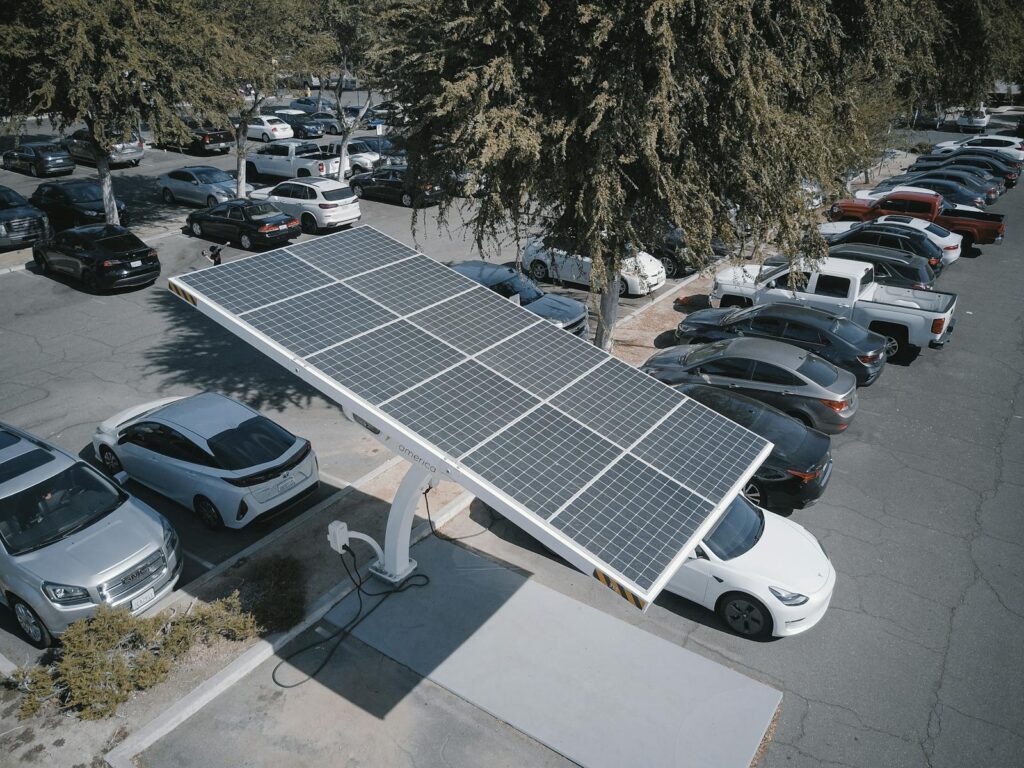
14. **Substantial Impact of Financing Dealer Fees**
For many homeowners, purchasing a solar system outright with cash isn’t a feasible option, leading them to explore financing solutions. While financing can make solar accessible, it often introduces another significant, yet frequently overlooked, hidden cost: dealer fees. These fees can dramatically inflate the overall price of your system compared to a cash purchase, fundamentally altering your long-term financial picture.
The impact of these dealer fees can be quite substantial. Industry expert Garrett Mendelsohn, CEO of Solar Bootcamp, notes that dealer fees can be as high as 40 percent or even greater when financing a solar system. He illustrates this with a stark example: “So if the cash price is $100,000, the financed price is $140,000.” This substantial difference highlights how financing can add tens of thousands of dollars to the total cost.
These high fees aren’t arbitrary markups; they reflect the challenging economics of the solar installation industry. Installers often wait up to eight months for payment. To make these lengthy payment cycles viable, financing companies build significant commissions and fees into the financed price, compensating for delayed cash flow and overhead.
A significant portion of solar installation soft costs, including customer acquisition, overhead, and profit, account for about 40% of a residential installation’s total cost. This helps explain why dealer fees, which often incorporate these operational expenses, become such a substantial component of financed systems in a competitive market.
Therefore, understanding the potential impact of dealer fees is paramount before committing to a financing agreement. It is always wise to compare cash prices versus financed prices carefully and to inquire explicitly about all associated dealer fees. While financing opens the door to solar for many, it’s a financial instrument that requires thorough scrutiny to ensure you’re making the most economically sound decision for your long-term investment.
Read more about: Beyond the Sticker Price: Unveiling How Car Dealers Secretly Add Thousands to Every Sale Through Financing and Hidden Charges
As we’ve uncovered, the journey to solar energy ownership is multifaceted, extending far beyond the initial panel installation. From the vital ongoing costs of internet connectivity for monitoring and the unavoidable utility charges, to the potential expenses of unexpected repairs and the significant investment in energy storage, each layer presents its own financial considerations. Add to this the subtle yet impactful forces of efficiency degradation, the nuanced conditions tied to incentives, and the often-steep reality of financing dealer fees, and a complete picture emerges. Equipping yourself with this comprehensive understanding empowers you not just to embrace solar, but to do so with the foresight and financial acumen needed to truly maximize its benefits for years to come. Making an informed decision now means unlocking greater savings and a more resilient energy future.




